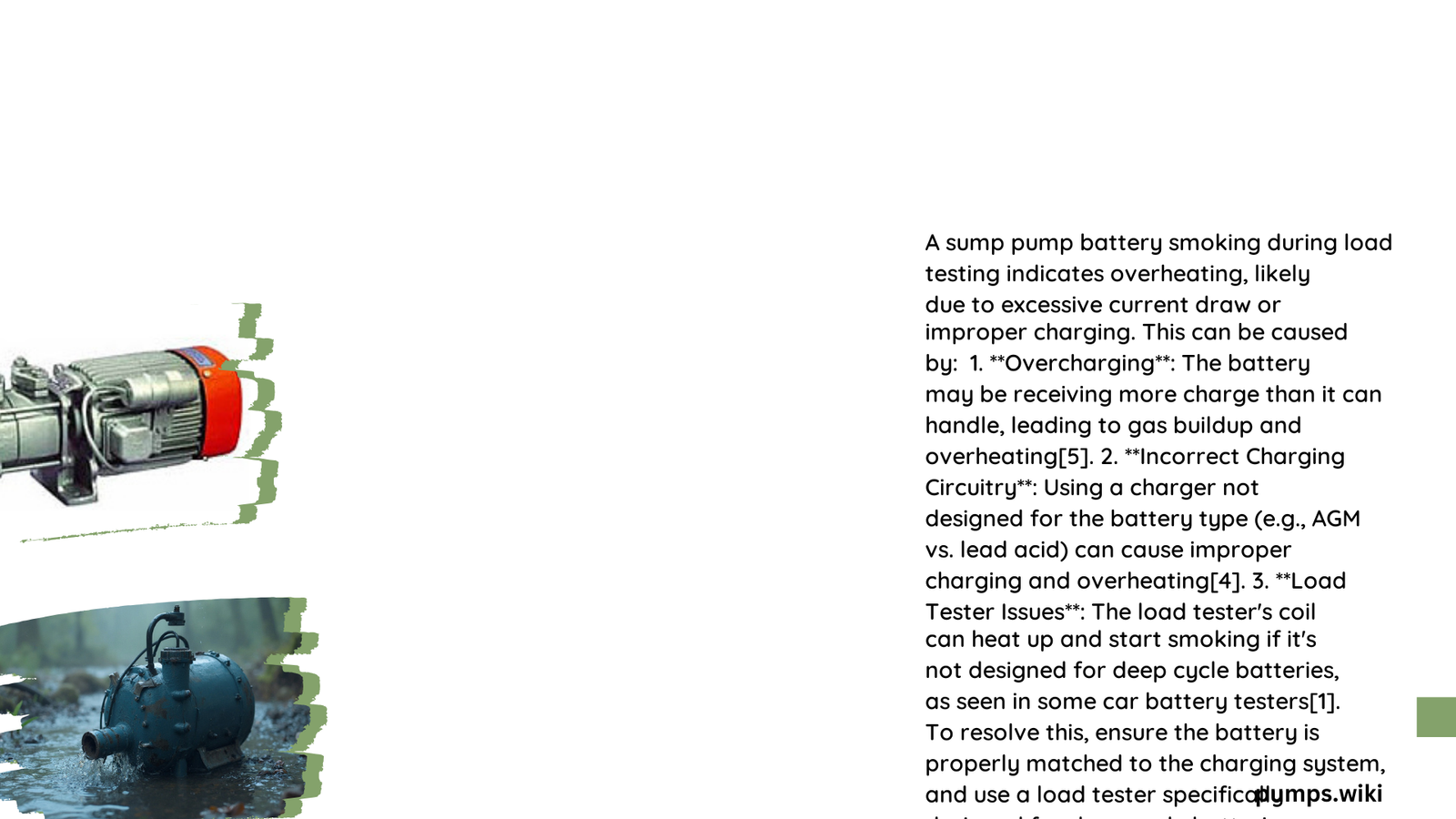A sump pump battery smoking signals a critical electrical malfunction that demands immediate attention. When batteries overheat, they release dangerous gases, potentially causing fire risks and system failure. Homeowners must understand the underlying causes, recognize warning signs, and implement preventive measures to protect their property and ensure reliable backup power during emergencies.\n\n## What Causes Sump Pump Battery to Smoke?\n\nSump pump battery smoking typically stems from several critical factors that compromise battery integrity and performance:\n\n### Why Does Battery Overcharging Occur?\n\n- Voltage Regulation Issues: Faulty charging systems can send excessive electrical current\n- Battery Age: Older batteries are more susceptible to overcharging\n- Improper Maintenance: Neglecting regular battery checks accelerates deterioration\n\n### What Chemical Reactions Trigger Smoking?\n\nLead-acid batteries undergo complex electrochemical processes during charging:\n\n| Process | Description | Risk Level |\n|———|————-|————|\n| Electrolysis | Water decomposition | High |\n| Gas Generation | Hydrogen/Oxygen production | Critical |\n| Heat Accumulation | Temperature increase | Severe |\n\n### How to Recognize Early Warning Signs?\n\nCritical indicators of potential battery failure include:\n\n1. Unusual heating around battery terminals\n2. Visible gas bubbling\n3. Persistent water loss in battery cells\n4. Corrosion on connection points\n5. Distinct burning smell\n\n## Safety Protocols for Smoking Sump Pump Batteries\n\n### What Immediate Actions Should You Take?\n\n- Disconnect Power: Immediately unplug the charging system\n- Ventilate Area: Open windows and ensure proper air circulation\n- Use Protective Gear: Wear gloves and safety glasses\n- Avoid Direct Contact: Do not touch the overheated battery\n\n### What Are Potential Risks?\n\n- Electrical fire hazards\n- Toxic gas emission\n- Personal injury potential\n- Complete system failure\n\n## Maintenance Strategies to Prevent Battery Smoking\n\n### How Often Should You Inspect Your Battery?\n\n- Monthly: Check water levels and visual condition\n- Quarterly: Test voltage and connection integrity\n- Annually: Comprehensive battery health assessment\n\n### What Tools Are Essential?\n\n- Digital multimeter\n- Distilled water\n- Corrosion-resistant cleaning materials\n- Battery load tester\n\n## Technical Diagnostic Techniques\n\n### How to Perform Battery Health Check?\n\n1. Measure open-circuit voltage\n2. Conduct load testing\n3. Inspect physical battery condition\n4. Check charging system performance\n\n## Professional Recommendations\n\n- Replace batteries every 3-5 years\n- Install high-quality surge protectors\n- Maintain consistent charging environment\n- Consider professional annual inspections\n\n## Cost-Effective Prevention\n\n### What Are Budget-Friendly Solutions?\n\n- Regular self-maintenance\n- Investing in quality battery systems\n- Implementing preventive monitoring\n\n## Conclusion\n\nUnderstanding and addressing sump pump battery smoking requires proactive management, technical knowledge, and consistent maintenance. By recognizing warning signs and implementing strategic preventive measures, homeowners can significantly reduce risks and ensure reliable backup power systems.\n\n### Reference:\n- Battery University\n- Electrical Safety Foundation\n- National Fire Protection Association

